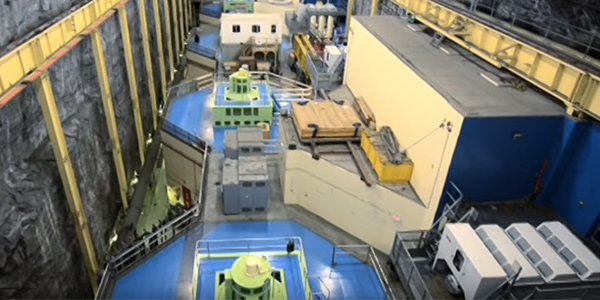By Michael Kuser
FERC on Monday accepted rule changes broadening energy storage resources’ ability to provide capacity, energy and ancillary services in ISO-NE’s markets, effective April 1 (ER19-84).
The commission said the Tariff revisions, which were largely backed by the Energy Storage Association and include a new section devoted to electric storage, “enhance competition.”
The commission declined to respond to ESA’s complaints regarding how ISO-NE’s plans to assign reserves to storage, saying it would deal with the issue in responding to the RTO’s compliance filing with Order 841 (ER19-470).
Storage resources could face tougher requirements in some regions than in others under proposed tariff revisions filed by RTOs and ISOs in their Order 841 compliance filings in December. (See RTOs/ISOs File FERC Order 841 Compliance Plans.)
Issued last February, Order 841 set a Dec. 3, 2019, compliance deadline.
Storage Old and New
ISO-NE says it has 19 MW of battery storage already participating in its markets, with more than 800 MW in its interconnection queue and another 170 MW of proposed battery storage in the queue that would be co-located with wind and solar power projects.
The RTO noted that while it has limited experience with electric battery storage, the region has been home since the 1970s to nearly 2,000 MW of pumped-storage hydroelectric units. Pumped storage has participated in the region’s wholesale electricity markets as two distinct asset types: a dispatchable generator asset that submits offers to supply energy and regulation, and a dispatchable asset-related demand (DARD) asset that submits bids to consume energy.
“The defining physical and operational characteristic of an electric storage resource is its ability to transition between consuming and injecting electric energy,” the RTO said in its filing.
The new Tariff section (III.1.10.6) defines electric storage facilities as one of two types:
- Binary storage facility: a pumped-storage hydro unit that offers both its generator asset and DARD in the energy market as rapid response pricing assets.
- Continuous storage facility, which the RTO explained in its Order 841 compliance filing “can transition seamlessly between charging and discharging.” It must be registered as both a dispatchable generator asset and a DARD, with each registration representing the same equipment. It also may provide regulation and must be registered as an alternative technology regulation resource (ATRR). The ATRR construct, ISO-NE explained, allows continuous storage facilities to “provide regulation in a manner that permits them to take full advantage of their ability to follow a regulation signal that traverses all or part of their negative-to-positive range nearly instantaneously.”
Sustainable for 1 Hour
The Northeast Power Coordinating Council mandates reserves be sustainable for at least one hour from the time of activation, which the RTO said can be met by traditional generators but can constrain limited energy resources such as continuous storage.
To comply with this standard, the RTO said it will automatically reduce the economic maximum limit of a continuous storage facility’s generator asset when the facility has less than one hour of available energy remaining. If such a unit were at risk of running out of energy in less than one hour, ISO-NE’s software will automatically adjust the unit’s economic maximum limit to an output level that can be sustained for the hour.
ESA asserted that “the operational impact of the proposed Tariff implementation” is unjust and unreasonable because it prevents some electric storage from providing all the energy service of which it is technically capable.
ISO-NE includes as reserve providers those generators that have dispatchable “headroom” above their current dispatch point and maximum output level and offline generators able to start up within 30 minutes.
The RTO said its Tariff revisions do not become unjust and unreasonable “simply because they may not facilitate a participant’s efforts to maximize its revenues, as ESA suggests.”
It also said ESA exaggerated the extent to which revenues would be impacted by redeclaration. The grid operator said it would not issue a dispatch instruction unless it could be followed for at least 15 minutes, and therefore “the figures that ESA provides are not entirely accurate.”
The commission said ESA’s concerns regarding the assignment of reserves were beyond the scope of the proceeding, noting that “what ESA describes as the ‘automatic redeclaration process'” was referenced only in ISO-NE’s transmittal letter and not the Tariff changes. It added the Tariff “already requires resources to update their operating limits in real time.”
“To the extent that the practices described in ISO-NE’s transmittal letter relate more generally to compliance with Order No. 841, we decline to address their merits in this proceeding,” the commission said. “ESA has filed a motion to intervene and submitted comments addressing automatic redeclaration in [the Order 841] proceeding, which will be addressed there.”





